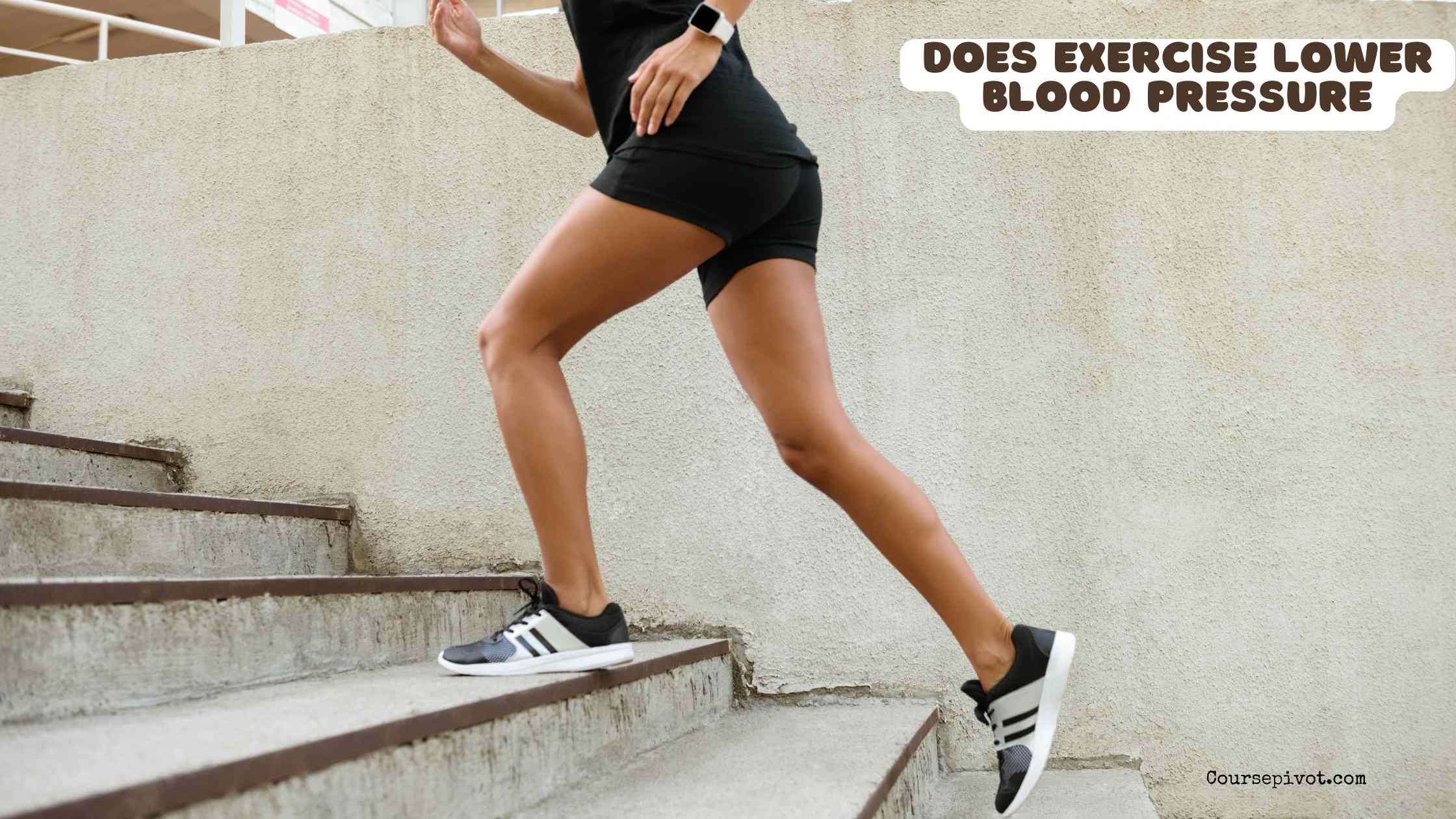
Does Exercise Lower Blood Pressure
High blood pressure, or hypertension, affects 1 in 3 adults globally, per a 2024 World Health Organization report, increasing risks of heart disease and stroke. Exercise is often recommended as a lifestyle intervention, but does it truly lower blood pressure? This blog examines the evidence behind exercise’s impact on blood pressure, exploring five key ways it works, supported by research, to help you understand its benefits and how to implement it effectively.
Table of Contents
Improves Blood Vessel Function
Regular exercise enhances the elasticity and function of blood vessels, allowing them to dilate more effectively, which reduces blood pressure. A 2023 study in the Journal of the American Heart Association found that aerobic exercise improved endothelial function, lowering systolic blood pressure by 5-10 mmHg in hypertensive adults.
For example, activities like brisk walking or cycling promote the release of nitric oxide, which relaxes blood vessels. This effect is most pronounced with consistent exercise over weeks. Improved vessel function eases the heart’s workload, directly lowering pressure.
- Enhances Vasodilation: Opens blood vessels for better flow.
- Reduces Resistance: Lowers strain on arterial walls.
- Sustained Impact: Benefits grow with regular activity.
How to Apply: Aim for 30 minutes of moderate aerobic exercise, like jogging, 5 days a week, as recommended by the American Heart Association.
Reduces Stress and Sympathetic Activity
Chronic stress elevates blood pressure by activating the sympathetic nervous system, which constricts blood vessels. Exercise counters this by reducing stress hormones like cortisol. A 2024 Hypertension journal study showed that 150 minutes of weekly exercise reduced stress-related blood pressure spikes by 4-8 mmHg in adults with mild hypertension.
Activities like yoga or swimming trigger relaxation responses, calming the nervous system. For instance, a student managing exam stress might find yoga lowers their blood pressure over time. This calming effect helps maintain healthier readings.
- Lowers Cortisol: Reduces stress-induced pressure spikes.
- Calms Nervous System: Decreases vessel constriction.
- Improves Mood: Stress relief supports overall health.
How to Apply: Incorporate stress-reducing exercises like yoga or tai chi for 20-30 minutes, 3 times weekly, using apps like Down Dog for guided sessions.
Promotes Weight Management
Excess weight is a major hypertension risk factor, with 60% of obese adults having high blood pressure, per a 2023 CDC report. Exercise burns calories and builds muscle, aiding weight loss or maintenance, which lowers blood pressure. A 2024 Circulation study found that losing 5-10% of body weight through exercise reduced systolic pressure by 7-12 mmHg.
For example, regular strength training or cardio helps shed pounds, easing pressure on the heart. A person losing 10 pounds through running might see noticeable blood pressure improvements. Weight control is a powerful tool for hypertension management.
- Reduces Heart Strain: Less weight lowers cardiac demand.
- Improves Metabolism: Enhances fat-burning efficiency.
- Sustains Benefits: Maintains healthy pressure long-term.
How to Apply: Combine cardio (e.g., running) and strength training (e.g., bodyweight exercises) for 150 minutes weekly, tracking progress with apps like MyFitnessPal.
Enhances Cardiovascular Fitness
Exercise strengthens the heart, enabling it to pump blood more efficiently with less effort, which lowers blood pressure. A 2023 American Journal of Cardiology study reported that improved cardiovascular fitness from aerobic exercise reduced diastolic blood pressure by 3-7 mmHg in pre-hypertensive adults.
Activities like swimming or cycling boost heart efficiency, reducing arterial strain. For instance, a weekly spin class can improve heart health over months. Better cardiovascular fitness supports long-term blood pressure control.
- Strengthens Heart: Improves pumping efficiency.
- Lowers Arterial Pressure: Reduces strain on blood vessels.
- Boosts Endurance: Enhances overall heart health.
How to Apply: Engage in aerobic exercises like swimming or brisk walking for 30 minutes most days, using fitness trackers like Fitbit to monitor heart rate.
Regulates Sodium and Fluid Balance
Exercise helps the body excrete excess sodium and fluids, which can elevate blood pressure if retained. A 2024 Journal of Clinical Hypertension study found that regular physical activity improved kidney function, reducing blood pressure by 5-8 mmHg in adults with hypertension.
For example, sweating during a run helps flush sodium, easing fluid retention. This is especially beneficial for those with salt-sensitive hypertension. Consistent exercise supports the body’s natural balance, keeping pressure in check.
- Reduces Fluid Retention: Lowers blood volume.
- Manages Sodium: Decreases pressure from salt buildup.
- Supports Kidneys: Enhances fluid regulation.
How to Apply: Perform moderate exercise like jogging or dancing for 30 minutes, 5 times weekly, paired with a low-sodium diet, guided by resources like the DASH diet plan.
Why Exercise Matters for Blood Pressure
Exercise is a proven, non-pharmacological way to lower blood pressure, reducing risks of heart disease and stroke, which affect 50% of hypertensive adults, per 2024 CDC data. It tackles multiple factors—vessel function, stress, weight, heart health, and fluid balance—offering a holistic approach. Studies consistently show reductions of 5-12 mmHg in blood pressure with regular activity, comparable to some medications. However, consistency is key, and overexertion without medical guidance can strain the heart, especially for those with severe hypertension.
Practical Tips to Incorporate Exercise
Starting an exercise routine to lower blood pressure is achievable with planning. Here are actionable strategies:
- Start Small: Begin with 15-minute walks, gradually increasing to 30 minutes, using apps like MapMyWalk to track progress.
- Mix Activities: Combine cardio (e.g., cycling) and stress-relief (e.g., yoga) for variety. YouTube offers free workout videos.
- Consult a Doctor: If hypertensive, get medical clearance before starting, using resources like CDC.gov for guidelines.
- Track Progress: Monitor blood pressure with a home device and log exercise with apps like Strava to stay motivated.
- Stay Consistent: Schedule workouts like classes, using Google Calendar, to build a routine.
| Strategy | Benefit | Resource/Example |
|---|---|---|
| Start Small | Builds sustainable habits | MapMyWalk, short walks |
| Mix Activities | Addresses multiple benefits | YouTube workouts, yoga |
| Consult a Doctor | Ensures safety | CDC.gov, medical advice |
| Track Progress | Monitors improvements | Strava, home BP monitors |
| Stay Consistent | Maximizes long-term impact | Google Calendar, schedules |
These steps make exercise accessible and effective. Local gyms, community centers, or online resources can support your routine. Start gradually to see measurable results.
Read Explain the Difference Between Physical Activity and Exercise
Key Takeaways
Exercise lowers blood pressure by improving blood vessel function, reducing stress, managing weight, enhancing heart fitness, and regulating sodium, with studies showing 5-12 mmHg reductions in hypertensive adults. Regular activity, like 150 minutes of weekly cardio or yoga, offers benefits comparable to medication, cutting heart disease risks. Practical steps—starting small, mixing exercises, and consulting doctors—ensure safe, effective routines. Resources like the DASH diet or fitness apps support implementation. By incorporating exercise, you can effectively manage blood pressure, boosting health and longevity.
Cite this article
You can copy and paste your preferred citation format below.
Martin, L. & Arquette, E.. (2025, August 21). Does Exercise Lower Blood Pressure. Coursepivot.com. https://coursepivot.com/blog/does-exercise-lower-blood-pressure/



